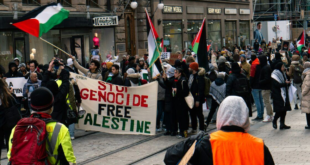January 25: In its first electoral outing, Hamas sweeps legislative elections in the Palestinian territories, ending 10 years of Fateh domination. Israel responds by refusing to do business with the new administration, saying “it is led by terrorists bent on destroying†the Jewish state.
February 4: First meeting between Hamas leaders and Abbas, who was elected 13 months earlier after the death of Yasser Arafat.
February 19: Israel implements sanctions against the Palestinians, triggering an economic crisis.
March 28: The Hamas-led government, led by Ismail Haniyeh, is inaugurated. Two days later, Washington announces it will boycott the new administration, but adds it hopes to keep contact with the Palestinians.
April 7: The European Union and the United States announce a suspension of direct financial aid to the Palestinian Authority.
April 9: The death toll in five years of unrest passes the 5,000 mark as Israel intensifies its military raids in Gaza in response to rocket attacks.
May 21: An Israeli-Palestinian mini-summit takes place in Egypt, followed four days later by the start of a inter-Palestinian “national dialogue”.
June 5: With dialogue faltering, Abbas announces a referendum among Palestinians on a document that implicitly recognises Israel.
June 9: Eight civilians are killed in an Israeli bombardment on a Gaza beach, leading Hamas to break its unilateral truce with Israel after 18 months.
June 16: The European Union approves special funding for the Palestinians that sidesteps Hamas.
June 27: An inter-Palestinian “national accord” is signed.
June 28: Israel begins a vast offensive in the Gaza Strip after the capture of one of its soldiers by Palestinian groups, including the armed wing of Hamas. The following day, Israel arrests about 60 Hamas officials, including several government ministers and dozens of deputies.
September 1: Meeting in Stockholm, the international community pledges $500 million in aid to the Palestinians.
September 2: Civil servants begin an unlimited strike over unpaid salaries.
September 11: After more than two months of negotiations, Abbas and Haniyeh agree on the government’s political programme.
October 1: Violence erupts between Hamas and Fateh provoked by an impasse over the formation of the government, eight people killed.
November 1-7: Israel launches an offensive on Beit Hanoun, in the north of Gaza, in which 56 Palestinians are killed. On November 8, an Israeli attack claims 18 more civilian lives.
November 26: Israeli-Palestinian ceasefire begins. The Israeli army pulls back from the Gaza Strip, ending a five-month incursion in which some 400 Palestinians were killed.
November 30: Collapse of talks on a Palestinian unity Cabinet.
December 14: Shots fired at a motorcade carrying Haniyeh after he was stopped at the Rafah border crossing carrying large sums of cash from foreign donors. Hamas accuses Fateh of trying to assassinate the prime minister.
December 16: Abbas calls for presidential and parliamentary elections, in a move that Hamas denounces as a coup against the government and warns it could trigger civil war.
 Eurasia Press & News
Eurasia Press & News

